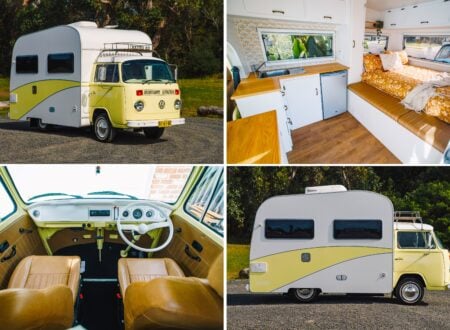The Tree Tent is the signature creation of the aptly named Tree Tents International based in England. Each of these spherical tents has is made from sustainably sourced plywood, recycled aluminium, UK-grown wool, and recyclable synthetic canvas.
Inside you’ll find either a double bed or two singles, with the option to have a double and a single if required. An optional micro wood-fired stove with flue, and heat proof liner is also available for those in cooler climates who want to use their tree tent year-round, and you can also opt for the premium 100% melton wool thermal lining and the multi-foil thermal insulation.

Installation of a tree tent only requires two sturdy trees, the full assembly and hoisting is said to take 2 to 4 days, depending on the weather of course, and they cost £18,500 or approximately $23,500 USD per unit in kit form.
Each tent has a maritime-influenced frame made from plywood, it has a flat wood floor, three windows, a skylight, and a main doorway. The floor has a hatch for access to the lower section of the sphere for stowage, and the furniture can be set up in a number of different ways to make the tent as flexible as possible.
There are two primary customers for these tree tents, private customers with trees on their property and commercial customers who set them up as glamping getaways. Some people install them with their own elevated wooden deck and some just use a simple stair ladder to the entrance.
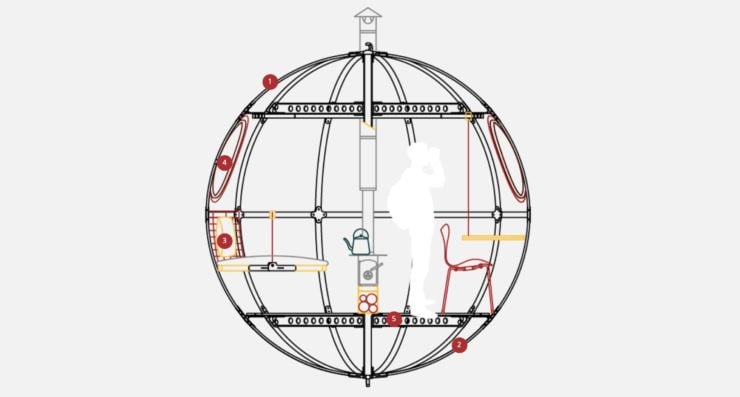
Each kit comes with the main structural frame, a weather tight outer shell, the windows and doors, an interior liner, two single beds or one double bed, the full rigging and suspension kit, and if you live in the UK, a tree survey, a health and safety check, and UK delivery.
Additional options include the aforementioned 100% melton wool thermal lining and multi-foil thermal insulation, as well as a micro wood-fired stove with flue (and heat proof liner), a protective winter cover, an extra single bed, lightweight, fold away and swivel tables and seating, secret hide-alls and storage hatches, a sustainable wool cushion and blanket pack, an LED lighting kit, a rechargeable battery pack charging points, the number and placement of windows, an entrance platform and ladder, and international shipping.

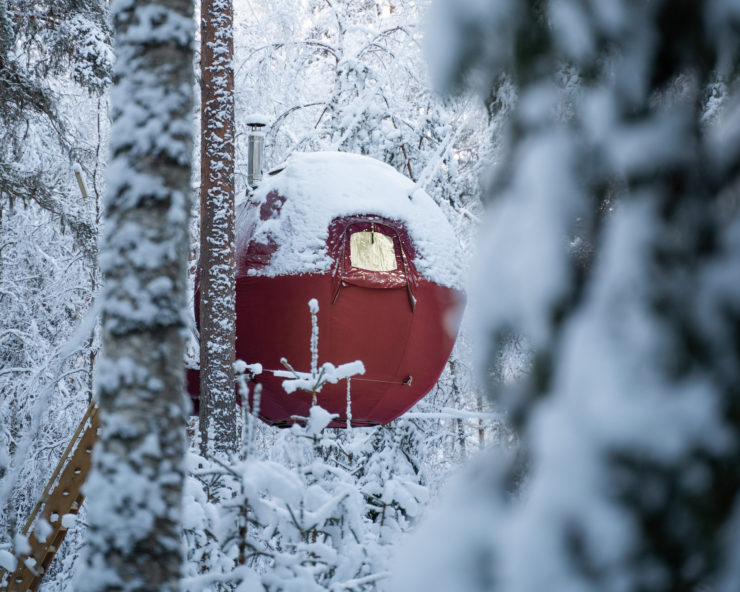
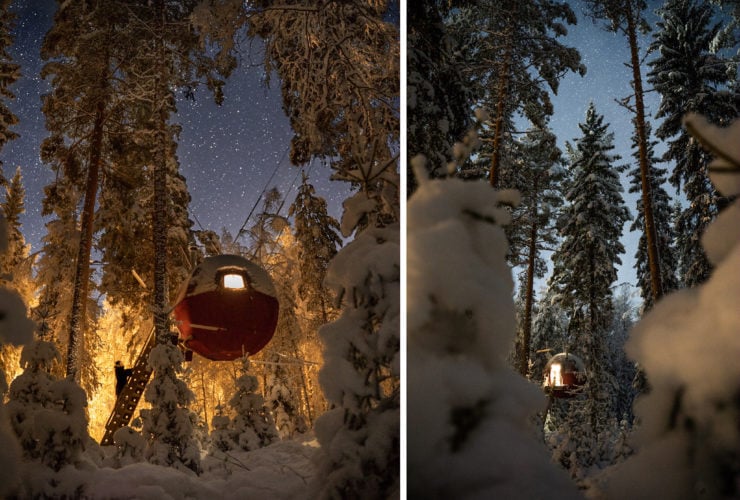
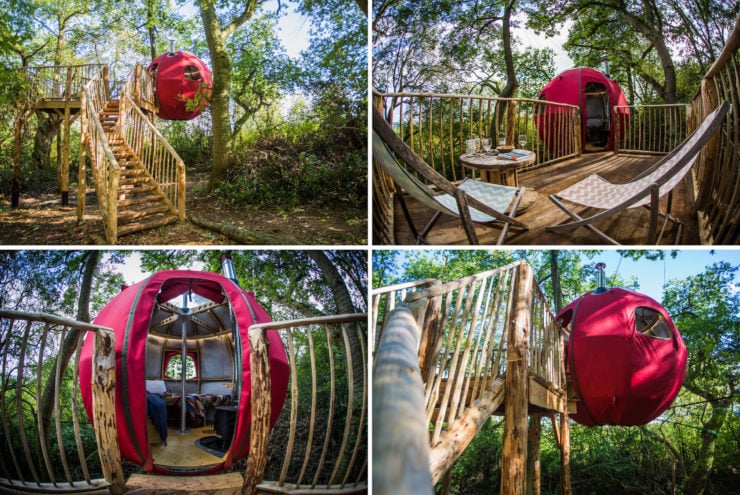
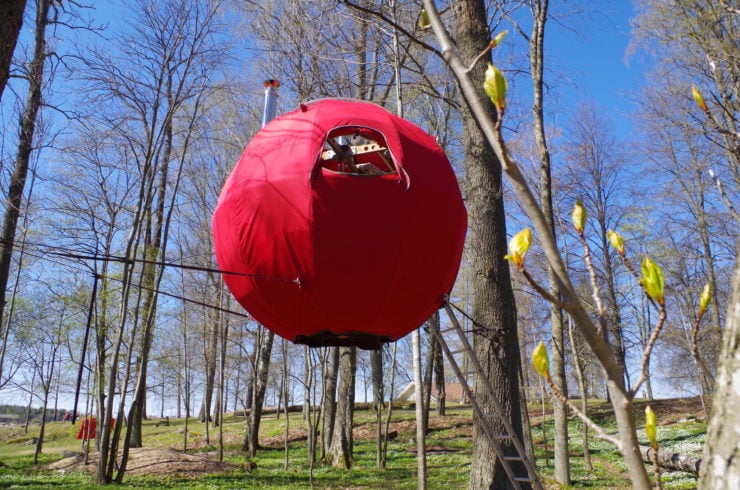
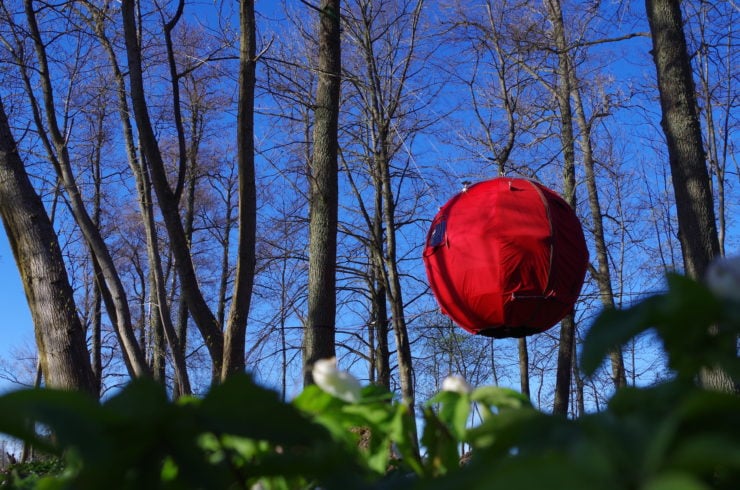


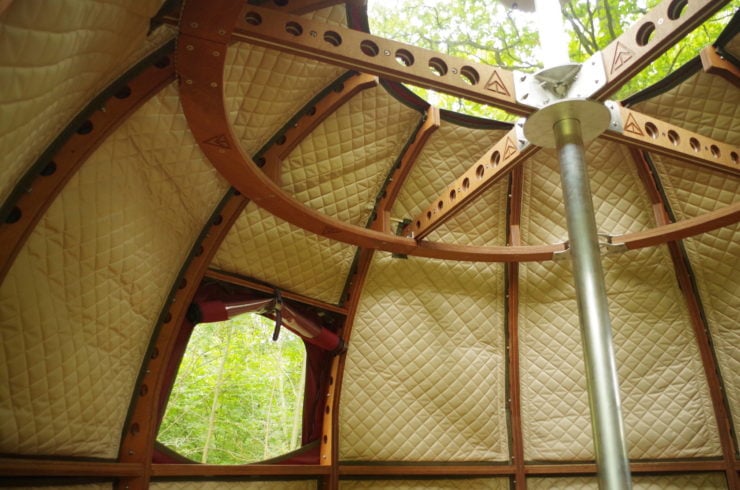
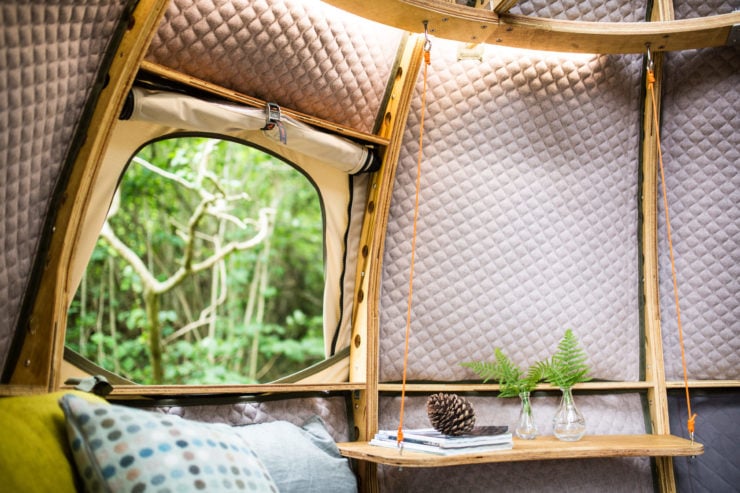
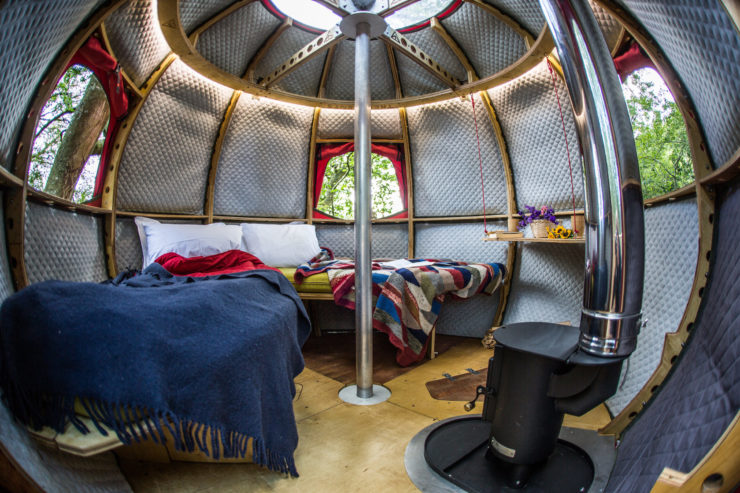

Images: Viggo Lundberg








